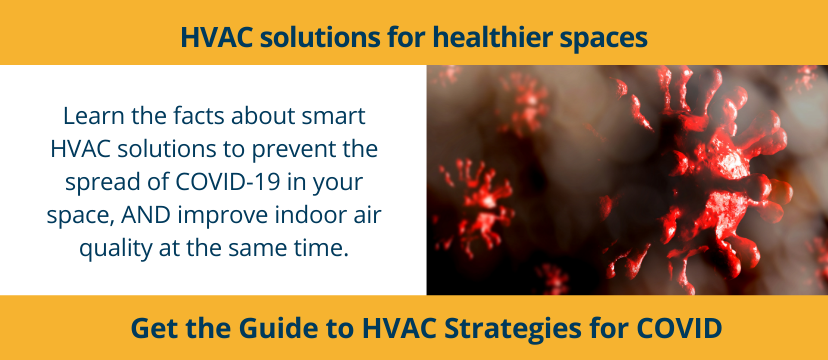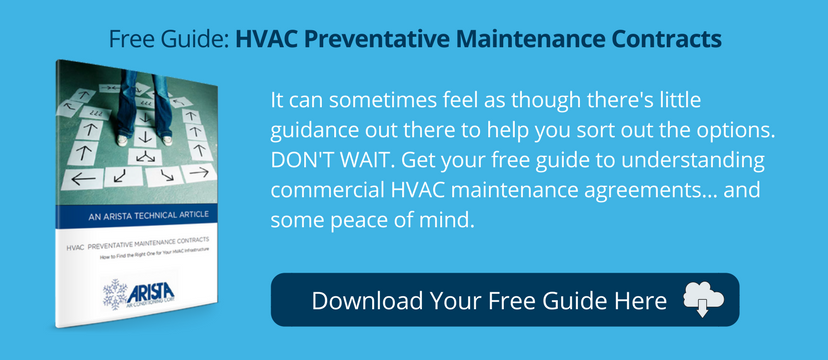
Your gym or health club should not smell like your high school gym did after a wrestling match. With proper air conditioning and gym ventilation, you can rid your space of unpleasant odors and provide your clients with the healthy environment they were looking for when they joined your club.
Especially now when people are worried about the spread of COVID, it’s imperative to provide good air quality so customers feel safe working out in your space.
Let’s take a look at how you can retain your customers and attract new ones by maintaining good air quality.
Healthy air is essential for a health club
Your clients are coming to your place because they want to improve their health or maintain it through exercise. As health-conscious individuals, they will not overlook poor indoor air quality that puts their health at risk. Don’t drive customers away because of inadequate gym ventilation.
Poor indoor air quality and subpar gym ventilation does not promote good health
What can happen if your gym ventilation system has not been appropriately designed or is not functioning properly? Your space can end up with high humidity, uncontrolled temperatures, and unpleasant odors. Your customers may even experience symptoms, due to exposure to unhealthy air, during and after their workouts.
Let’s look at what can happen if you do not correct the gym ventilation problem that is causing uncomfortable conditions:
- Mold and mildew grow in humid conditions
- Viruses and bacteria thrive in humid air
- Odors and physical symptoms drive away customers
- Poorly functioning HVAC leads to higher energy bills
- You may be heading toward a system breakdown
Insufficient gym ventilation: Beware of dangerous CO2 levels
As we exercise, our heart rate accelerates, which results in faster breathing. This quickened breathing leads us to exhale a higher rate of carbon dioxide than normal. In your gym, you have a facility full of people exhaling elevated amounts of carbon dioxide, which can cause a significant rise in carbon dioxide in the air and a decrease in oxygen.
The insufficient oxygen in the air can have a suffocating effect, make customers feel tired more quickly and lead to a disappointing workout. High levels of carbon dioxide are particularly prevalent in smaller enclosed workout rooms such as aerobic studios and spin cycle rooms.
A properly designed gym ventilation system is critical because ventilation flushes out excess carbon dioxide and brings in fresh air.
A December 2014 edition of the Building and Environment Journal cites a study completed by the University of Lisbon and Delft University of Technology in the Netherlands where indoor air quality was studied at 11 Portugal fitness centers. These centers are similar to fitness facilities found in the U.S. The study revealed that the gyms measured high levels of airborne dust, carbon dioxide, formaldehyde and other volatile organic compounds (VOC). The concentrations of these substances for the most part exceeded the majority of accepted standards for indoor air quality. (There is no governmental agency in the U.S. that conducts routine air quality inspections in gyms.)
As you can see, humid air laden with CO2 will do nothing to promote the healthy atmosphere you want for your clients. If poor gym ventilation is allowed to continue over an extended period of time, your customers could develop symptoms that are associated with poor indoor air quality when they visit your facility including:
- Eye, nose throat and lung irritations – watery eyes, sneezing and coughing
- Skin rashes
- Infections
- Headaches and dizziness
- Shortness of breath
It won’t take too long before your customers tie these health issues to poor indoor air quality. They may opt to cancel their membership and go elsewhere for their physical fitness needs.
Related article: 10 Tips to Improve Air Quality & Make Indoor Air Safer to Breathe
Ways you can combat poor indoor air quality
Properly designed HVAC
If you have the luxury of building a fitness center from the ground up, you can start with a well-designed HVAC system to expertly handle gym ventilation needs. You can also use construction materials that are low in VOCs such as plywood, paint, floor finishes, and carpets.
Many fitness centers, however, are retrofitted into an existing facility. If that’s the case for you, have an HVAC expert inspect your heating, air conditioning, and ventilation to make sure they are properly designed to provide good air quality for your customers. Adding more ventilation and/or making other system changes can make a big difference.
Ventilate moisture-prone areas
When considering gym ventilation improvements, take a close look at your locker room. Locker rooms are a haven for moisture from sweat and showers.
Under the International Building Code, moist air is not permitted to be recirculated, which means it must be vented outside of the building. If you have a pool or sauna or steam room, even more moisture is produced. It is critical that your gym ventilation provides for an adequate exhaust system to vent the moisture from the building.
Other gym ventilation upgrades could include air supply fans to improve air balance and the installation of blowers. Dehumidification systems are often installed in pool or other high humidity areas.
Air purification technology
As New York businesses reopen after the pandemic shutdown, they are taking every step they can to prevent the spread of COVID-19 in their spaces. You may have heard about using HEPA or MERV 13 HVAC filters, which can offer some protection but isn’t always a practical solution. One of the most effective ways to keep customers and employees safe is installing air purification devices that can destroy contaminants in the air, including coronavirus.
Learn more about this technology and get answers to your questions: COVID-19 and Your HVAC System.
Regular HVAC maintenance
Installing the right air conditioning system and proper gym ventilation in your fitness center is only half the battle. You must make sure it is regularly inspected and maintained.
When you consider that all the air your customers and employees inhale at your health facility is circulated through your HVAC system, it makes sense to complete routine maintenance and system tune-ups to make sure your system is working at optimum levels and providing your customers with consistent comfort and the fresh air they need to promote fitness and good health.
Arista Air can design a new system or upgrades for your existing system, plus provide you with expert preventative maintenance that will enhance the climate at your center and make it an inviting place for your clients.
To learn more about how to protect your sizable HVAC investment, check out our free guide: HVAC Preventive Maintenance Contracts: How to Find The Right One For Your HVAC Infrastructure.
Safe & effective cleaning
One of the least costly ways to help alleviate poor indoor air quality is to ensure that you buy greener cleaning supplies from companies that certify that their products meet strict chemical emission standards. The Occupational Safety and Health Administration (OSHA) requires that business maintain Safety Data Sheets that contain a list of potentially harmful substances handled in the workplace and these sheets should include VOC levels.
Another easy way to improve indoor air quality by preventing the spread of bacteria is to provide an abundant supply of hand soap and sanitizers and to instruct employees to immediately wipe down equipment used by members. Make sure to provide members with towels and make sure after use that those wet towels are not stored in a heap and are washed on a timely basis. Be vigilant about keeping clean bathrooms, showers and changing areas.
Good gym ventilation is critical to safe air & happy customers
If you own an older fitness facility, it may have an HVAC system that is inefficient and beyond its useful life. The HVAC system may have even been inadequately designed and also may not meet current energy codes.
A properly designed gym ventilation system is essential to your customer’s comfort and health. It controls moisture and can help to prevent the spread of illness. It provides the right balance of gases and ensures the air you breathe doesn’t contain too much carbon dioxide. It controls odors and extracts contaminants from occupied spaces.
You may not need an entirely new HVAC system. Possibly, your current system needs some tweaking such as relocating intakes, adding makeup air or moving ductwork.


